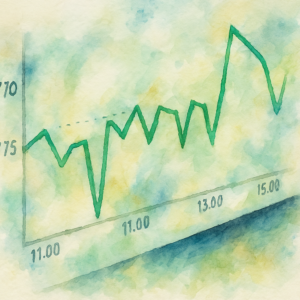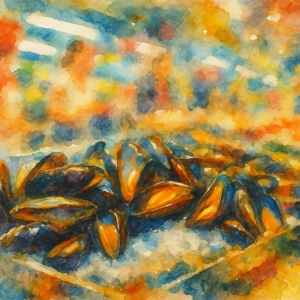Improve your French listening comprehension with this clip from the Inner French podcast. It’s 39 words in 26 seconds. How many can you pick out? Start at any level and improve your French listening comprehension.
Take the quiz, join the conversation.
Did you find this one challenging or easy? Did you hear something diffferent? What surprised you? What levels did you complete? Comment below and share what’s opening up for you with this quiz.
This clip is from the Inner French podcast Episode 001. Listen and fill in what you hear below. Read more and find a translation below. Find the full podcast here.
Press play and take the transcription quiz to practice your French listening comprehension.
(You can use the ⋮ to adjust playback speed)
The above audio sample and transcription is from the Inner French podcast episode 001. We do not own the content. Listen to the entire episode here.
A coffee machine
I had to wonder at this phrase. I would have guessed using de, but the explanation below makes sense.
Then I wondered, could you say “I’m a coffee drinking machine” in French… and it seems you cannot. But you could say “Je suis une accro du café” which means “I am a coffee addict”. This seems to get my point across.
I’m interested by his use of talking about coffee filters here, when the affective filter is all about emotions… Maybe something will become clearer in tomorrow’s clip.
What’s opening up for you in this clip? I’m open to any and all feedback, as always. Let me know.
The snippet in English
Find a translation of this snippet here, how much of this did you hear?
Et pour finir, la dernière hypothèse, la cinquième hypothèse, c’est l’hypothèse du filtre affectif. Qu’est-ce que c’est qu’un filtre ? Un filtre, je vais prendre un exemple pour vous expliquer. Dans une machine à café. Dans une machine à café, il faut utiliser un filtre pour séparer le liquide et les grains de café.
And finally, the last hypothesis, the fifth hypothesis, is the affective filter hypothesis. What is a filter? A filter, I’ll take an example to explain. In a coffee machine. In a coffee machine, you have to use a filter to separate the liquid and the coffee beans.
The above translation from Deepl. Source
What? “Machine à café”, really?
In French, “machine à café” literally translates to “coffee machine” in English. The preposition “à” (which means “to” or “at”) is used instead of the preposition “de” (which means “of” or “from”) in this case because “à café” is a noun phrase that functions as an object complement of “machine”.
When describing objects or things in French, the preposition “à” is often used to indicate the purpose or function of the object, while the preposition “de” is used to indicate the material or origin of the object. For example, “une bouteille d’eau” (a bottle of water) uses “de” to indicate the material (water) contained in the bottle, while “un verre à eau” (a glass for water) uses “à” to indicate the purpose or function (for water) of the glass.
So, in the case of “machine à café”, “à” is used to indicate the purpose or function of the machine (for making coffee), while “de café” would indicate the material or origin of the machine (made of coffee or from coffee), which is not the intended meaning.
What does “filtre afectif” mean?
The term “filtre affectif” is a concept that has been extensively studied in psychology, and it refers to the idea that emotions can act as a filter, influencing the way we perceive and interpret information. This filter can be both positive and negative, and it can have a significant impact on our decision-making and behavior.
The concept of “filtre affectif” is based on the idea that our emotional state can affect the way we perceive and interpret the world around us. For example, if we are in a good mood, we are more likely to see things in a positive light, and if we are in a bad mood, we may be more likely to see things in a negative light. This emotional filter can influence our decision-making in a variety of ways, from the products we buy to the people we choose to spend time with.
One example of “filtre affectif” in action is the way in which our emotions can influence our food choices. Studies have shown that when we are feeling sad or stressed, we are more likely to choose high-fat, high-calorie foods, while when we are feeling happy and relaxed, we are more likely to choose healthier foods. This is because our emotional state can influence our perception of how rewarding or satisfying different foods are.
The concept of “filtre affectif” has its roots in the field of psychology, and it has been extensively studied in a variety of contexts. It is a useful concept for understanding how emotions can influence our behavior and decision-making, and it has important implications for fields like marketing and advertising, where understanding consumer emotions is critical for success.
The origins of the term “filtre affectif” are unclear, but it has been used extensively in the psychology literature. It is a French term that translates to “emotional filter” in English, and it reflects the idea that emotions can act as a filter, influencing our perception of the world around us.
One fun fact about “filtre affectif” is that it is closely related to the concept of “cognitive biases,” which are systematic errors in thinking that can influence our perception and decision-making. “Filtre affectif” can be thought of as a type of cognitive bias, in that it reflects the way in which our emotions can bias our thinking and perception.
In conclusion, “filtre affectif” is an important concept in psychology that highlights the influence of emotions on perception and decision-making. By understanding how our emotions can act as a filter, we can gain a better understanding of our own behavior and make more informed decisions in a variety of contexts.
Why is it “prendre un exemple”?
In French, “prendre un exemple” is a common phrase that translates to “to give an example” in English. The phrase is used to indicate that someone is about to provide an example to illustrate a point or clarify a concept.
The use of the verb “prendre” in this context may seem strange to English speakers, who would more commonly use the verb “donner” (to give) instead. However, in French, the verb “prendre” is often used to express the idea of “taking” or “choosing” something, including examples.
The phrase “prendre un exemple” has its roots in the French language and has been in use for many years. While the exact origin of the phrase is unclear, it likely evolved over time as a way to express the idea of choosing or selecting an example to use in a given situation.
In French, the phrase “prendre un exemple” is used in a variety of contexts, from academic and professional settings to casual conversations. For example, a teacher might say “Je vais prendre un exemple pour illustrer cette règle” (I am going to give an example to illustrate this rule) to explain a grammar concept to their students, while a friend might say “Peux-tu me prendre un exemple de ce que tu veux dire?” (Can you give me an example of what you mean?) to clarify a point in a conversation.
Overall, the use of the phrase “prendre un exemple” in French reflects the way in which the language has evolved to express the idea of selecting or choosing an example to illustrate a point. While it may seem unfamiliar to English speakers, it is a common and well-established phrase in the French language.
What did you love about this?
Comment below with your feedback! Tells us what you think. Send a note or leave a comment below. We appreciate the feedback. Also, we’re always looking for partners to build this site and grow the content available.









